Welcome to our blog, where we dive into the fascinating world of high-density lemon plantations! This article explores everything you need to know about spacing, plants per acre, techniques, cost, and yield when cultivating lemons in a high-density setup. Regarding spacing, high-density lemon plantation involves placing the trees closer together compared to traditional methods. This technique maximizes land utilization and allows for greater yield per acre.
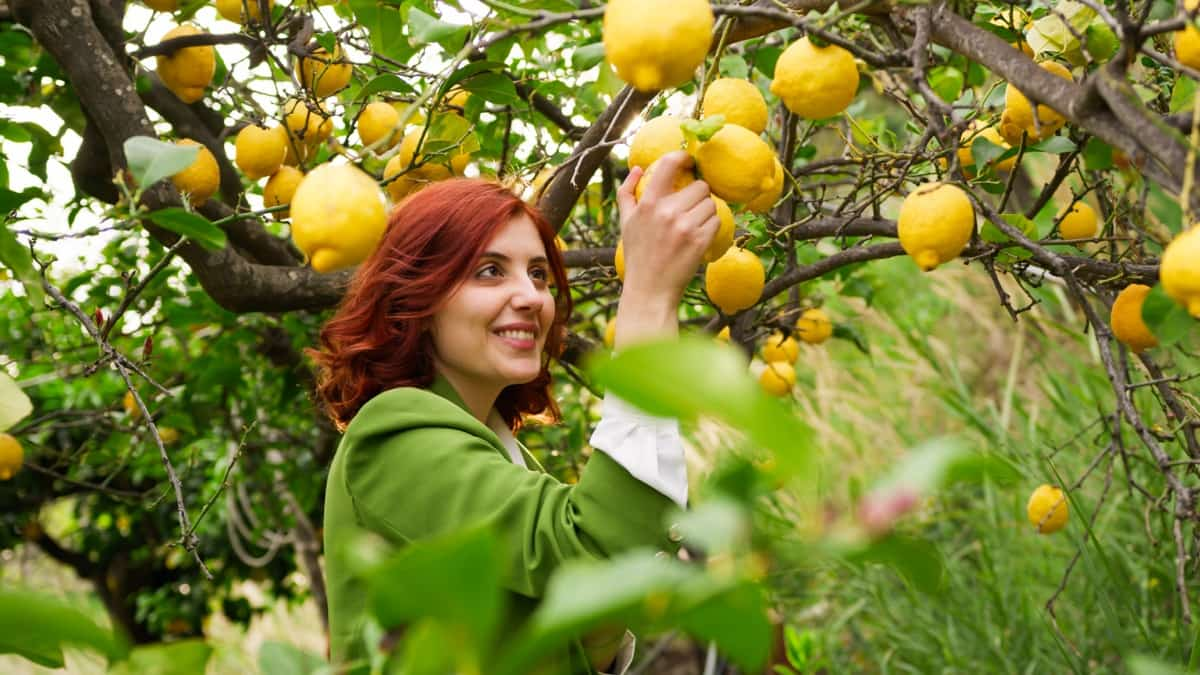
Speaking of yield, high-density lemon plantations boast impressive production numbers thanks to efficient planting techniques and optimal tree spacing. But what about the cost? While establishing a high-density lemon plantation requires an upfront investment, the potential returns make it worthwhile. We’ll delve into the expenses involved, including land preparation, tree acquisition, irrigation systems, and ongoing maintenance. So, if you’re eager to learn how to make the most of your lemon plantation, join and we explore the ins and outs of high-density cultivation.
What is High-Density Lemon Plantation?
The high-density lemon plantation is an innovative cultivation method where trees are planted closer together, maximizing land utilization and increasing yield per acre. This technique significantly reduces the spacing between trees compared to traditional methods. Typically, in high-density lemon plantations, the spacing between trees ranges from 8 to 12 feet (2.4 to 3.6 meters).
This proximity promotes competition among the trees for resources, leading to better fruit quality and higher production. Regarding plants per acre, high-density lemon plantations can accommodate anywhere from 300 to 500 trees, depending on the spacing and layout. This high number of trees per acre results in a greater overall yield.
The increased yield in high-density lemon plantations is achieved through efficient planting techniques and optimal tree spacing, allowing for improved light penetration, air circulation, and easier management practices. By implementing high-density lemon plantation techniques, growers can benefit from higher productivity, increased profitability, and more efficient land utilization.
Benefits of High-Density Lemon Plantation
High-density lemon plantation offers a range of benefits that make it a preferred choice for growers. Considering these benefits, a high-density lemon plantation is a compelling choice for those seeking enhanced productivity, profitability, and efficient land utilization.
- Maximizing Yield: By planting lemon trees closer together, high-density plantations can achieve significantly higher yields per acre.
- Efficient Land Utilization: The compact spacing allows farmers to maximize their land, optimizing resources and increasing productivity.
- Better Fruit Quality: The competition among closely spaced trees promotes improved fruit quality, resulting in higher market value.
- Increased Profitability: With higher yields and better fruit quality, high-density lemon plantations offer the potential for increased profitability.
- Easy Management: The proximity of trees facilitates easier management tasks, such as pruning, pest control, and harvesting.
- Resource Optimization: High-density plantations require less water, fertilizers, and other inputs per tree, leading to more efficient resource utilization.
- Early Harvest: The optimal tree spacing and efficient management practices can lead to early fruiting, allowing for quicker returns on investment.
- Space Flexibility: High-density lemon plantations can be established in small and large areas, making it a versatile option for growers with varying land sizes.
In case you missed it: How this Farmer Earning 8 Lakhs from 3 Acres Sweet Orange Cultivation – A Success Story of a Mosambi/Sweet Lemon Farmer
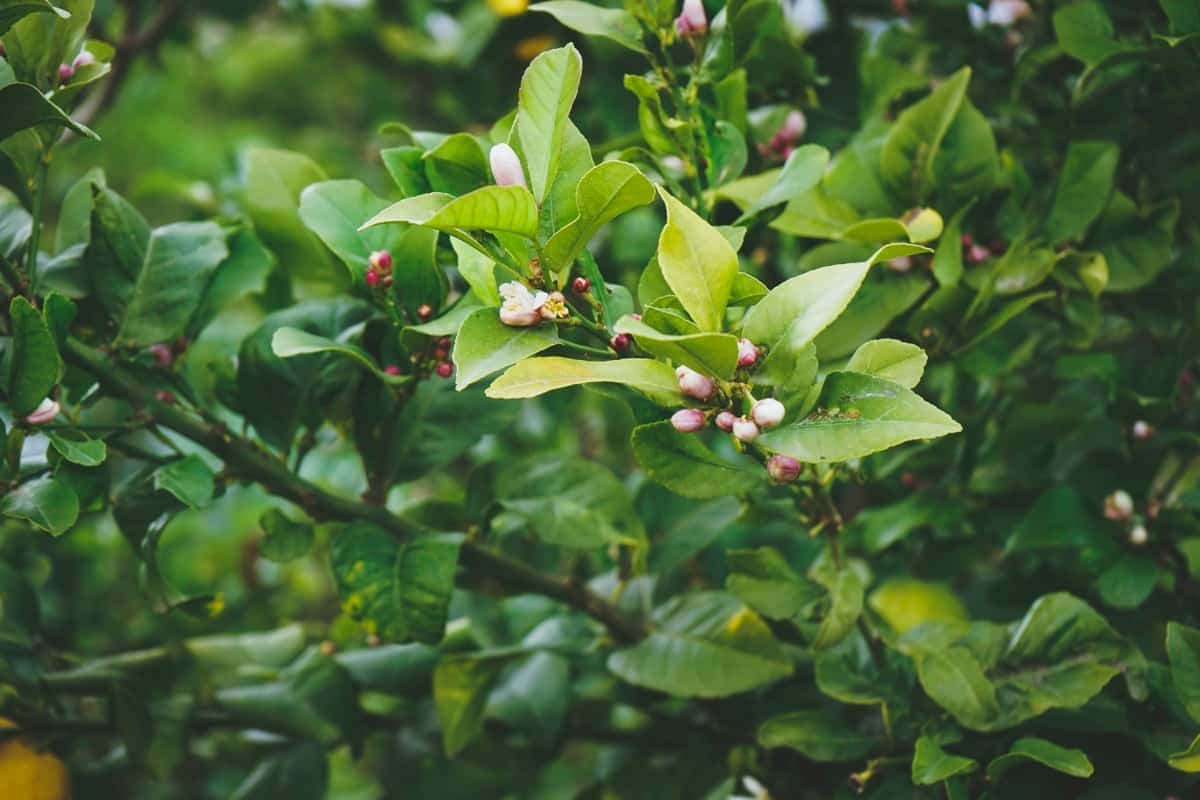
High-Density Lemon Plantation Techniques
High-density planting is widely adopted in various fruit crops, including lemons, to boost yield and optimize land utilization. By accommodating more plants in a given area, growers can increase productivity and maximize their returns. This approach proves particularly beneficial for fruit varieties like acid lime and lemons, where the plant canopy takes time to develop, leaving unused space in conventional wide-spacing plantations.
Lemon plantation in different planting systems was evaluated: ultra-high density planting (UHD) with 1600 trees per hectare at 2.5 × 2.5 m spacing, high-density planting (HDP) with 800 trees per hectare at 5 × 2.5 m spacing, and the conventional control (CON) with 400 trees per hectare at 5 × 5 m spacing.
In a tropical, dry, sub-humid climate, Lemon has average temperatures ranging from 20.5 °C to 34.2 °C and an annual precipitation of 1128 mm. The UHD system exhibited the highest organic carbon content and major nutrient levels, while the HDP system showcased higher leaf nitrogen and potassium contents. HDP also displayed a dense and vigorous plant canopy with a higher leaf area index than UHD.
High-Density Lemon Plantation Varieties
- Eureka Lemon (Citrus limon ‘Eureka’): This variety is widely grown in high-density plantations due to its vigorous growth, adaptability to various climates, and consistent fruit production. Eureka lemons have a bright yellow color, acidic flavor, and a high juice content.
- Lisbon Lemon (Citrus limon ‘Lisbon’): Another popular choice for high-density planting, Lisbon lemons are known for their abundant fruit production and excellent quality. They have a tangy flavor and are commonly used for culinary and commercial purposes.
- Improved Meyer Lemon (Citrus × meyeri): Meyer lemons are favored for their sweeter taste and thin skin. They thrive in high-density plantations and offer a unique flavor profile, making them popular in the culinary world.
- Ponderosa Lemon (Citrus limon ‘Ponderosa’): Ponderosa lemons are larger than traditional lemons and have thick, bumpy skin. They are well-suited for high-density planting due to their prolific fruiting and ornamental appeal.
- Femminello Lemon (Citrus limon ‘Femminello’): This Italian variety is valued for its high productivity and juicy, acidic fruits. It adapts well to high-density planting and is widely cultivated for fresh consumption and juice production.
Increasing Yield in High-Density Lemon Plantation
Although close-spacing plantations experienced a slightly higher incidence of insect pests and diseases, fruit quality parameters remained largely unaffected by spacing. On a per-plant basis, the UHD system consistently yielded lower fruit quantities. However, when considering the entire plantation area, the UHD system achieved more than double the fruit yield compared to the control, ranging from 8.24 to 35.36 tons per hectare versus 3.08 to 11.64 tons per hectare, respectively, across different years.
In case you missed it: A Step-By-Step Guide to High Density Fruit Farming: For Guava, Banana, Mango, Pineapple, Lemon, Papaya, Litchi, and Apple
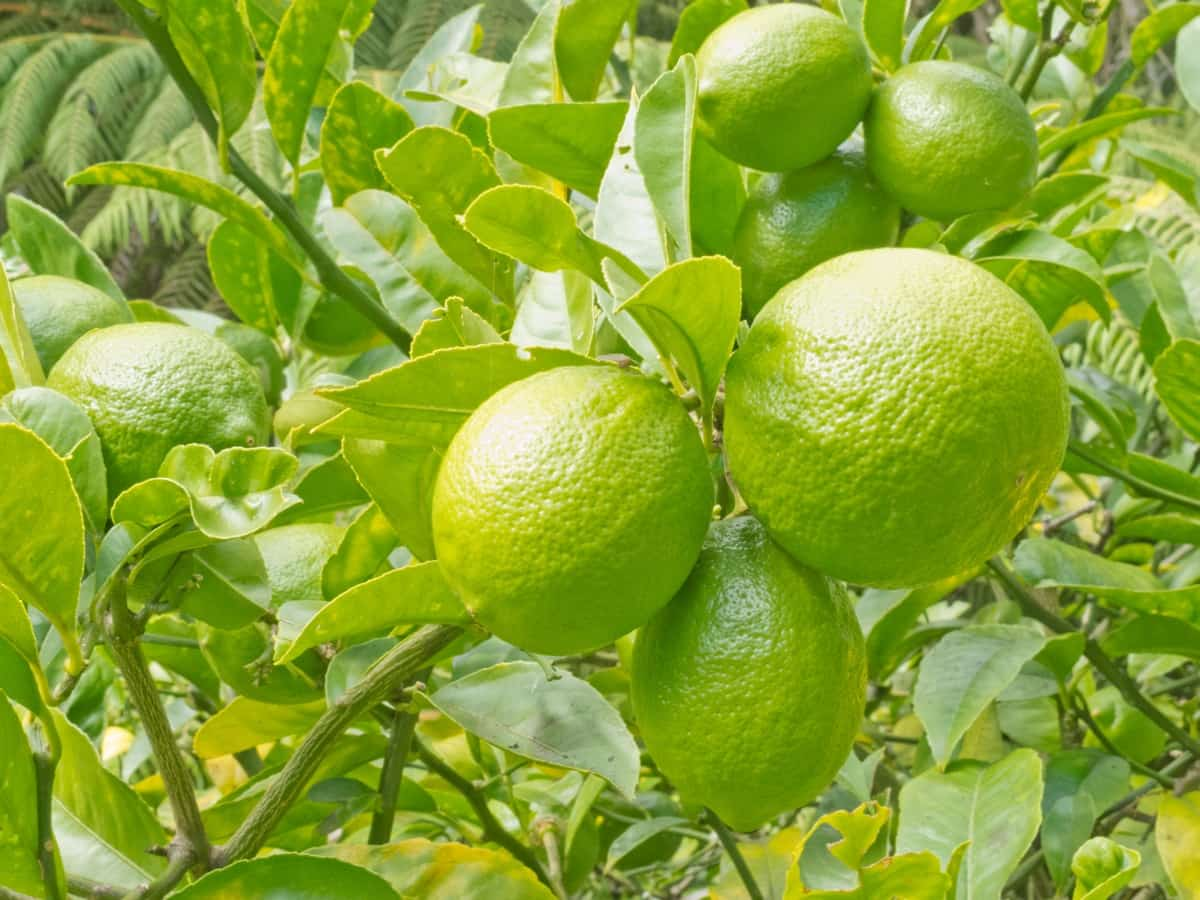
In the final year of the study, the UHD system significantly outperformed the HDP system in terms of yield (35.36 tons per hectare versus 25.09 tons per hectare, respectively), while the benefit-cost ratio remained similar for both systems.
Sustainable and Best Practices for High-Density Lemon Plantation
Sustainable and best practices for high-density lemon plantations involve various factors to ensure successful cultivation. High-density lemon plantations can achieve optimal growth, yield, and overall success.
Climate: Lemon fruits are grown in diverse agroecological conditions, from arid to humid tropical climates. Citrus trees thrive in subtropical regions, while in tropical areas, careful management of water deficit stress is required to regulate growth flushes and induce concentrated blooming.
Soil: Lemon plants can be cultivated in various soils, including sandy loam, clay loam, and acidic soils. Light soils with good drainage and a pH of 5.5 to 7.5 are ideal. However, they can adapt to pH levels from 4.0 to 9.0. High calcium carbonate concentration in the root zone can hinder growth.
Planting Material: Quality planting material is essential for Lemon cultivation. Rootstock selection is crucial, and ideal selections developed by research centers should be used for propagation. Disease-free mother plants obtained through shoot tip grafting should be selected for budwood.
Land preparation: Thorough plowing and leveling of the land are necessary. Drainage channels should be created in hilly areas to prevent water logging. High-density planting is possible on terraces in hilly areas.
Plant density: Normal spacing for limes/lemons in high-density plantations is 6 x 6 meters or 5 x 5 meters, with a population of 277 to 400 per hectare. The ultra-high density planting (UHD) had 1600 trees per hectare at 2.5 2.5 m spacing, the high-density planting (HDP) had 800 trees per hectare at 5 2.5 m spacing, and the normal control (CON) had 400 trees per hectare at 5 5 m spacing.
Irrigation: Citrus plants require critical stage watering, particularly in the initial year. Light and high-frequency irrigation are beneficial, and micro-irrigation systems can save water and ensure fruit retention during critical growth stages.
In case you missed it: How to Grow Lemon Tree from Seed: A Step-by-Step Guide for Beginners
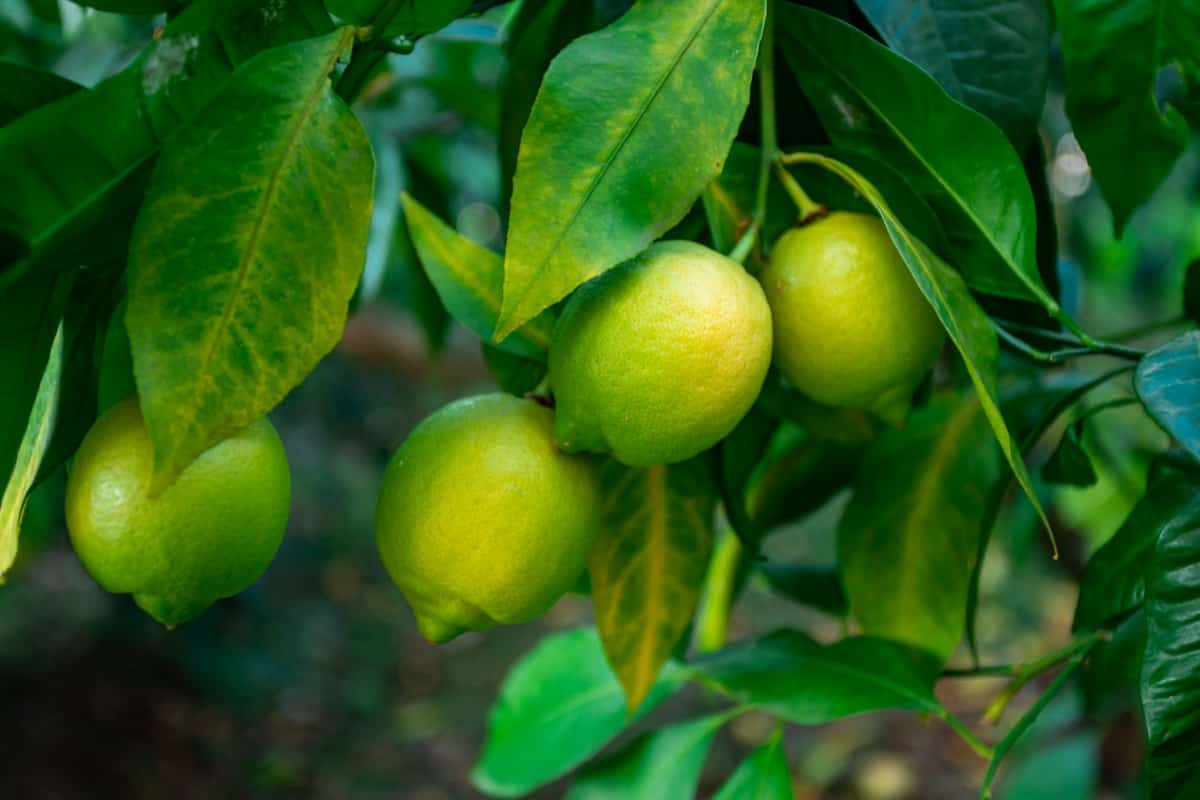
Manures and fertilizers: Manuring should be done in three equal doses per year, and the recommended doses of farmyard manure and various nutrients should be followed.
Interculture: Soil aeration and health are maintained through interculture operations such as plowing, spading of basins, and weed control. Weedicides may be used for chemical weed control.
Intercrops: Leguminous crops can be grown in citrus orchards, especially during the first few years after planting.
Training and Pruning: Training involves removing lower shoots and maintaining an open center for the plant. Proper distribution of branches is necessary. Pruning should be done periodically to remove diseased or dead wood.
Pests and Diseases Management: Important pests of citrus include citrus black flies, whitefly, psylla, thrips, scale insects, and fruit flies. Diseases like gummosis, citrus greening, canker, powdery mildew, and anthracnose can also affect citrus plants. Control measures involve appropriate sprays and pruning.
Harvesting and Yield: Limes and lemons take 150-160 days to mature. Multiple crops can be obtained in a year. Yield starts from the third year, with an average production of 1,000-1,500 fruits per tree after stabilization.
Post-harvest management: Proper handling and storage techniques should be employed to maintain fruit quality and prolong shelf life.
High-Density Lemon Plantation Spacing
High-density plantation spacing benefits fruit crops like acid lime and Lemon, allowing for increased land utilization. In studies, lemon seedlings were planted under ultra-high density (UHD) with 1600 trees per hectare at 2.5 × 2.5 m spacing, high density (HDP) with 800 trees per hectare at 5 × 2.5 m spacing, and conventional (CON) with 400 trees per hectare at 5 × 5 m spacing.
Optimal Fertilization for High-Density Lemon Plantation
- A balanced mix of organic and artificial fertilizers is needed for high-density lemon plantation development and production.
- Apply 5–20 kg of well-decomposed cow manure and 100–300 grams of urea per lemon tree aged 1–3.
- For trees aged 4–6, use 25–50 kg of cow dung and 100–300 grams of urea per tree.
- Apply 60–90 kg of cow dung and 600–800 grams of urea to 7–9-year-old trees.
- Apply 100 kg of well-decomposed cow manure and 800 to 1600 grams of urea per 10-year-old tree.
- Apply all cow dung fertilizers in December. Urea should be applied in February and April or May in two doses. Apply the whole SSP fertilizer dose with the first urea treatment.
In case you missed it: Top 15 Steps to Boost Lemon Yield: How to Increase Fruit Size, Production, and Quality
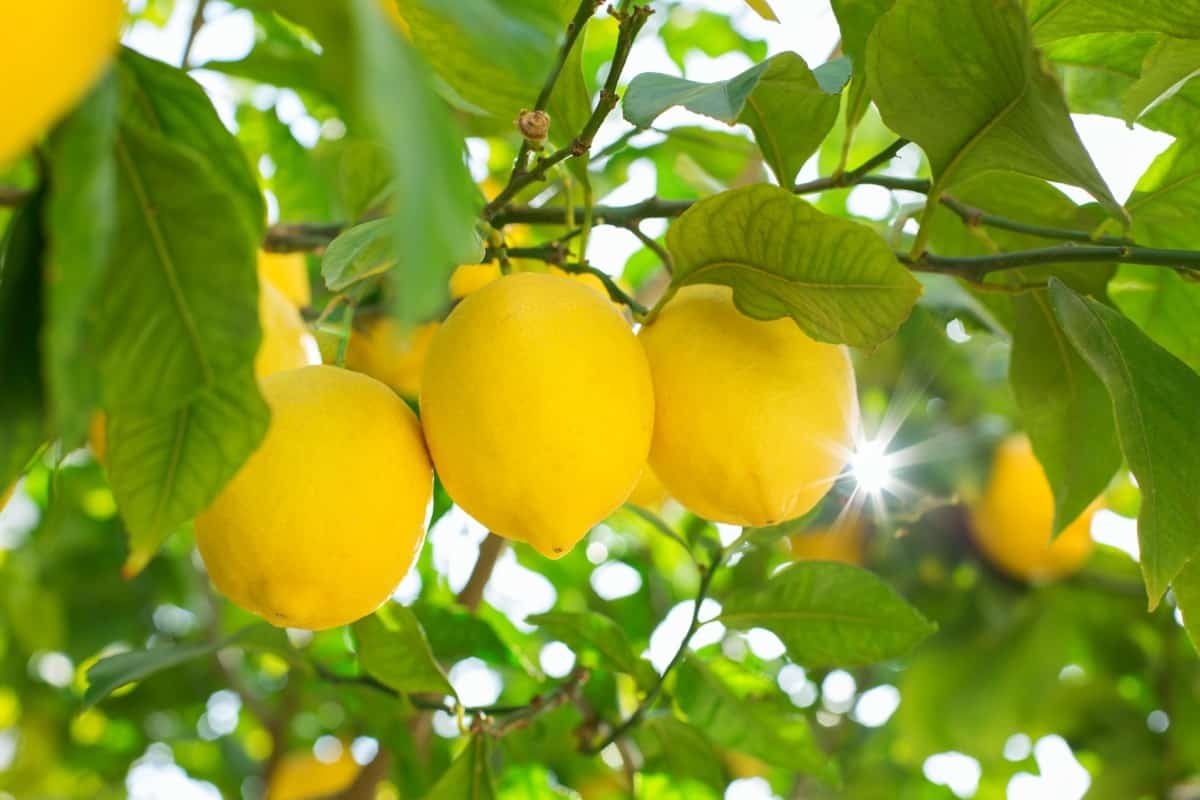
High-Density Lemon Plantation Pruning Methods
Pruning is an essential practice in high-density lemon plantations to promote the growth of a sturdy trunk. Initially, it is recommended to remove shoots that are 40-50 cm above the ground level. Maintaining an open center for the plant is important, allowing adequate airflow and sunlight penetration.
Branches should be evenly distributed on all sides of the tree. Early removal of cross twigs and water suckers is necessary. Mature, fruit-bearing trees generally require minimal pruning. Regularly remove diseased, injured, drooping branches and dead wood to maintain tree health and vitality.
Managing Pests and Diseases in High-Density Lemon Plantations
Pests
Common insect pests that affect citrus in high-density lemon plantations include citrus black fly, whitefly, citrus psylla, citrus thrips, leaf miner, scale insects, bark-eating caterpillar/trunk borers, fruit fly, fruit-sucking moths, and mites. Mandarins, particularly in humid climates, may also be attacked by pests like mealy bugs and nematodes. Here are the control measures for major pests:
- Leaf miner: Apply foliar sprays of quinalphos, fenvalerate, or monocrotophos weekly on new flushes when the infestation is observed.
- Citrus black fly and whitefly: Spray acephate, quinalphos, or imidacloprid against adults and during the 50% egg-hatching stage.
- Citrus psylla: Foliar spray with quinalphos, acephate, or monocrotophos at the bud burst stage or as needed.
- Citrus thrips: Apply foliar sprays of dimethoate or monocrotophos at the bud burst stage and during berry-sized fruits.
- Scale insects: Use parathion emulsion, dimethoate, kerosene oil, malathion, or carbaryl for spraying.
- Trunk borer: Swab the tunnels with dichlorvos, carbaryl, or monocrotophos.
- Bark-eating caterpillar: Plug larval tunnels with cotton wads soaked in dichlorvos, carbaryl, or monocrotophos.
Diseases
Important diseases in citrus include Phytophthora gummosis, citrus tristeza virus, citrus greening (HLB), citrus canker, powdery mildew, and anthracnose. Here are the control measures for these diseases:
- Phytophthora Gummosis: Scrape affected areas and apply Bordeaux paste, copper oxyfluoride paste, or ridomil + carbendazim.
- Citrus greening (HLB): Remove infected branches/unproductive trees, replace them with disease-free plants, and apply ledermycin with ZnSO4 and FeSO4. Control citrus psylla vectors.
- Citrus tristeza virus: Control aphids, use cross-protected grafts, shoot tip grafted plants, or disease-free grafts.
- Citrus canker: Cut infected twigs, and spray Bordeaux mixture or copper fungicide.
- Powdery mildew: Prune dead twigs and apply foliar sprays of wettable sulfur or copper oxychloride.
- Anthracnose: Prune dead twigs and spray carbendazim or copper oxychloride at fortnightly intervals.
High-Density Lemon Plantation Harvesting Tips
Harvesting lemons in high-density plantations requires attention to timing and quality. Ripe lemons should have a bright yellow color and a firm texture, avoiding immature and overripe fruit. Carefully cut the lemons using sharp pruning shears, leaving a small portion of the stem attached.
Handle the lemons gently to prevent bruising or damage. After harvesting, store the lemons in a cool and well-ventilated area to maintain their quality. Regularly inspect the trees for ripe fruit to ensure timely harvesting and prevent overloading of branches. Frequent harvesting encourages continuous fruit production and tree health. A, a de-greening chamber with specific temperature, ethylene concentration, and humidity can be utilized for induced color change.
High-Density Lemon Plantation Cost Analysis (1 Acre Basis)
The cost analysis for a high-density lemon plantation on a 1-acre basis shows that the total cost for the first year is Rs 35,000-50,000. The total cost for the next four years is Rs 1,20,000-1,50,000. Therefore, the five-year total cost amounts to Rs 1,50,000-2,35,000.
In case you missed it: High-Density Orange Plantation: Spacing, Plants Per Acre, Techniques, Cost, and Yield
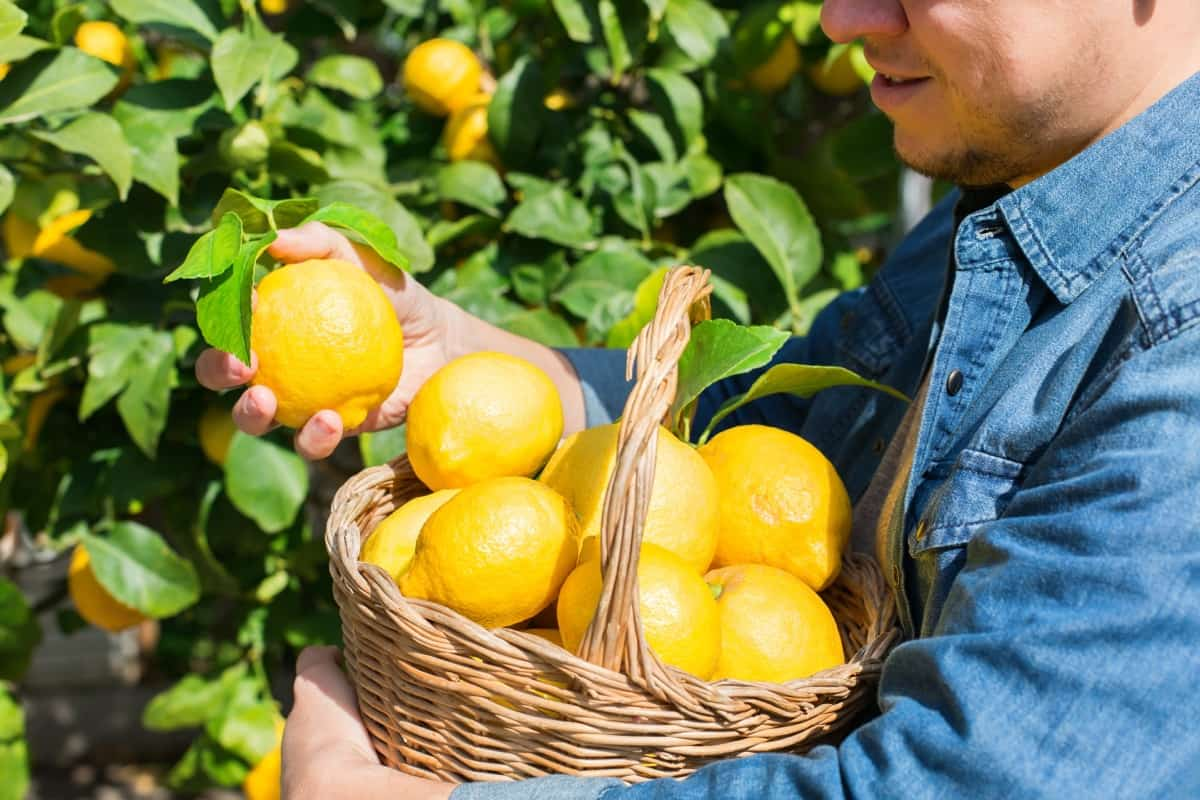
However, when considering the profit, assuming a lemon price of Rs 20-45 per kg and an average of 84 kg of fruits per tree from 700 trees, the total profit amounts to Rs 5,20,000-7,00,000. Deducting the total cost from the profit, the net profit is calculated as -Rs 3,50,000-4,00,000, indicating a loss in this scenario.
Note: The calculated profit of Rs 3,70,000 is based on a 5-year-old tree, and the profit may vary depending on market conditions. Additionally, for high-density plantations, the cost of cultivation may increase by approximately 55% of the total cost of traditional cultivation.
Conclusion
High-density lemon plantation involves efficient spacing and higher plant density per acre, increasing yield potential. However, it requires careful planning, higher initial costs, and meticulous management techniques to maximize productivity and profitability.
- Types of Pesticides Used in Agriculture: A Beginner’s Guide
- Economical Aquaculture: A Guide to Low-Budget Fish Farming
- 15 Common Planting Errors That Can Doom Your Fruit Trees
- How to Make Houseplants Bushy: Effective Tips and Ideas
- Innovative Strategies for Boosting Coconut Pollination and Yield
- Pollination Strategies for Maximum Pumpkin Yield
- The Complete Guide to Chicken Fattening: Strategies for Maximum Growth
- Natural Solutions for Tulip Problems: 100% Effective Remedies for Leaf and Bulb-Related Issues
- Revolutionizing Citrus Preservation: Towards a Healthier, Greener Future
- Natural Solutions for Peony Leaf and Flower Problems: 100% Effective Remedies
- Maximizing Profits with Avocado Contract Farming in India: A Comprehensive Guide
- Natural Solutions for Hydrangea Problems: 100% Effective Remedies for Leaf and Flowers
- The Ultimate Guide to Choosing the Perfect Foliage Friend: Bringing Life Indoors
- From Sunlight to Sustainability: 15 Ways to Use Solar Technology in Agriculture
- The Ultimate Guide to Dong Tao Chicken: Exploring from History to Raising
- The Eco-Friendly Makeover: How to Convert Your Unused Swimming Pool into a Fish Pond
- Mastering the Art of Delaware Chicken Farming: Essentials for Healthy Backyard Flocks
- 20 Best Homemade Fertilizers for Money Plant: DIY Recipes and Application Methods
- How to Craft a Comprehensive Free-Range Chicken Farming Business Plan
- Brighten Your Flock: Raising Easter Egger Chickens for Beauty and Bounty
- How to Optimize Your Poultry Egg Farm Business Plan with These Strategies
- Subsidy for Spirulina Cultivation: How Indian Government Schemes Encouraging Spirulina Farmers
- Ultimate Guide to Raising Dominique Chickens: Breeding, Feeding, Egg-Production, and Care
- Mastering the Art of Raising Jersey Giant Chickens: Care, Feeding, and More
- Ultimate Guide to Raising Legbar Chickens: Breeding, Farming Practices, Diet, Egg-Production
- How to Raise Welsummer Chickens: A Comprehensive Guide for Beginners
- How to Protect Indoor Plants in Winter: A Comprehensive Guide
- Ultimate Guide to Grow Bag Gardening: Tips, Tricks, and Planting Ideas for Urban Gardeners
- Guide to Lotus Cultivation: How to Propagate, Plant, Grow, Care, Cost, and Profit
- Agriculture Drone Subsidy Scheme: Government Kisan Subsidy, License, and How to Apply Online
- Ultimate Guide to Raising Araucana Chickens: Breed Profile, Farming Economics, Diet, and Care
- Bringing Hydroponics to Classroom: Importance, Benefits of Learning for School Students
- Ultimate Guide to Raising Polish Chickens: Breed Profile, Farming Economics, Diet, and Care
- Ultimate Guide to Raising Australorp Chickens: Profile, Farming Economics, Egg Production, Diet, and Care
- Silkie Chicken Farming: Raising Practices, Varieties, Egg Production, Diet, and Care
- Sussex Chicken Farming: Raising Practices, Varieties, Egg Production, Diet and Care